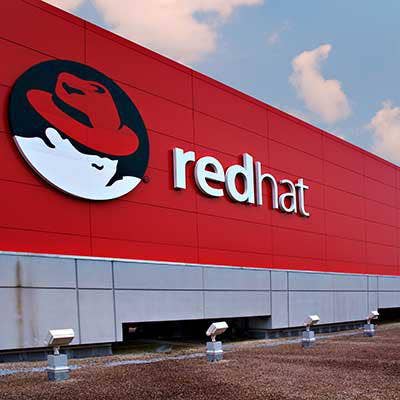IBM-Red Hat Deal Makes IBM ‘Undisputed’ Hybrid Cloud Leader, Says CEO Rometty

IBM's blockbuster $34 billion acquisition of open source specialist Red Hat will create the "undisputed, number one leader" in the emerging $1 trillion hybrid cloud market, said IBM CEO Ginni Rometty.
"[Red Hat] brings to us eight million-plus developers, 90 percent penetration in the Fortune 500 and they are now one of the key foundation technologies of a hybrid cloud. I hear that from everyone," said Rometty, during a conference call with analysts and investors on Monday. "They offer a portfolio of open standards, including OpenShift, and have open hybrid cloud infrastructure. They use open containers, Kubernetes, cloud-native development, cloud automation – not to mention their developer ecosystem. … As we both looked at this hybrid cloud opportunity, multi-cloud world in front of us, [Red Hat CEO] Jim [Whitehurst] and I shared the same strategic vision and we have very complimentary capabilities."
Rometty said hybrid cloud is an emerging $1 trillion market with customers seeking to move more data and applications across multiple clouds in a portable manner. IBM will become the leader in the second revolution of cloud, which Rometty dubs as "chapter two,” through its long-time innovation around Linux, open source and cloud investments.
[Related: Ginni Rometty: 5 Reasons Why IBM Is Acquiring Red Hat]
"Our global business services, they've built a cloud migration factory, built Cloud Garage and we have 90,000 cloud architects to accelerate this movement. We have the most SAP in our cloud and the most VMware on our cloud," said Rometty. "To lead in chapter two, you got to be hybrid, multi-cloud, open, secure end-to-end and have multi-cloud management."
Robert Keblusek, CTO of Sentinel Technologies, a Downers Grove, Ill.-based IBM and Red Hat partner, said IBM's goal of creating a single cloud platform that can easily work across multiple clouds will resonate well with enterprises.
"It makes sense for enterprises to be able to stand up a cloud friendly, better packaged platform that can work with any cloud, which has integration to AWS, Azure, Oracle Cloud, Google Cloud and IBM's own cloud and have those connections so that you can transparently compute whether it's on-premise or in the cloud," Keblusek said. "If you put a single platform in that works across multiple clouds, it gives you a far more agile and secure computing experience. … This seems to be a $34 billion play to help them to create their own value proposition."
IBM plans to integrate various pieces of its portfolio, such as artificial intelligence and analytics solution, into the Red Hat stack, according to Rometty. She said the goal is to create end-to-end holistic solutions together through the two vendors’ complementary technologies.
Additionally, Rometty believes the biggest upcoming battle in the cloud marketplace will be open versus proprietary cloud solutions. With customers seeking to not get locked in to a cloud provider, IBM will create an open, portable hybrid cloud platform that works across multiple cloud environments.
"We are going to be the leader in open. Clients do not want lock-in and they are sharpening up to this right now. They're actually limiting function they use on other people's cloud saying, 'No, if that is not portable, do not touch those functions.' You're seeing that happen big time," she said. "[Customers] want portable and this idea that they can extend every part of IBM. So move it across multiple cloud environments with no lock-in, that's what the two of us do together – we've both been building on that technology. … Red Hat runs on a number of clouds, but that's not native. There's a big difference to clients in what they're able to do and secure when you run native. We'll be the native guy."
IBM and Red Hat have maintained an alliance for some 20 years under which a number of Red Hat products, including Linux and Kubernetes, are part of IBM's $19 billion hybrid cloud software and services business.
On Sunday, the two vendors unveiled an agreement in which IBM will acquire all issued and outstanding common shares of Red Hat for $190 per share, a significant premium above Red Hat's $116.68 per share as of Friday. Red Hat's stock has since jumped 45 percent to $169.44 per share as of Monday afternoon.
Keblusek said it is a very wise decision for IBM to get "deeper" into hybrid cloud. "I don't know if IBM is one of the first companies you think about from a cloud provider perspective, but they have their own cloud platform and bought SoftLayer," he said. "Although AWS and Azure are leaps and bounds ahead of anybody else, with IBM buying a platform, more of a subscription-based platform and a leader in the open source technologies, it's going to give them quite a bit of opportunities."
Red Hat will become part of IBM's hybrid cloud business and remain as its own independent, vendor-neutral business unit while keeping its current cultural and go-to-market strategy. Red Hat CEO Jim Whitehurst will continue to lead the company and will join IBM's senior management team, reporting to Rometty. IBM will also maintain Red Hat's Raleigh, N.C., headquarters, facilities, brands and practices.
The acquisition has been approved by the board of directors at both companies, but it must still be approved by Red Hat shareholders and is subject to regulatory approvals and other closing conditions. The companies expect to complete the acquisition during the second half of 2019.
"This is the right time and we have been shaping IBM for this moment," said Rometty. "This is clearly IBM's most significant step in the transformation of our offerings and services to lead in high value. The combination of IBM and Red Hat, it's a game changer."